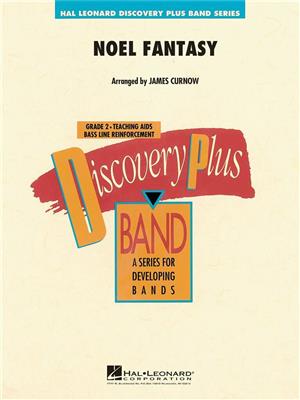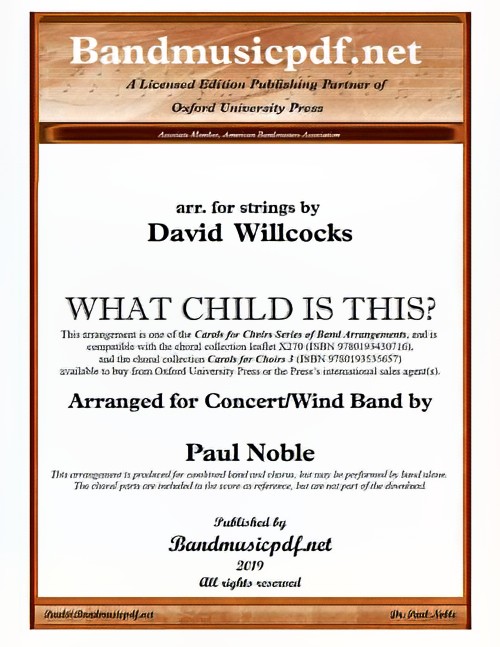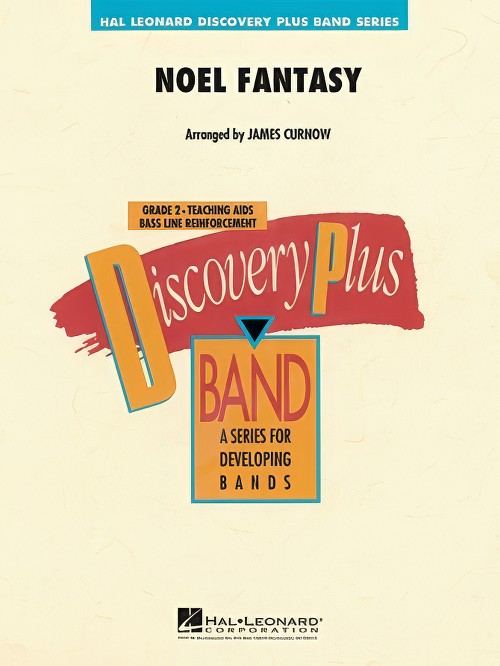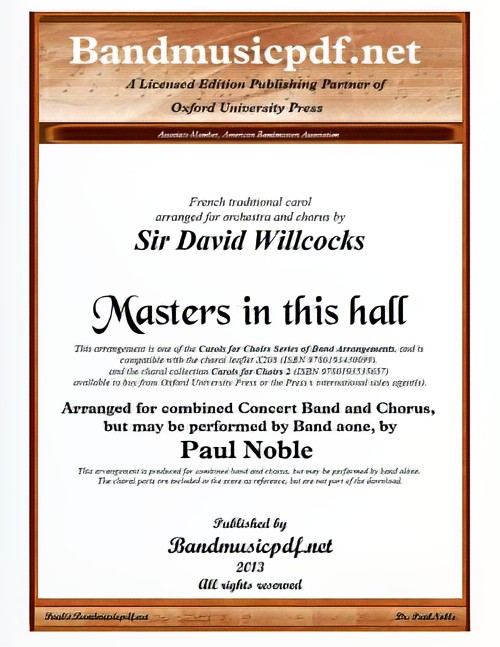Results
-
 £53.50
£53.50Noel Fantasy
Here is a joyous celebration of the Christmas season featuring two familiar uptempo carols: the traditional French carol Noel Nouvelet and the 17th-century English carol The First Noel. James Curnow skillfully uses a set ofvariations and contrasting musical styles in weaving both tunes into an appealing and uplifting setting, perfect for any holiday concert.
Estimated dispatch 7-14 working days
-
 £102.99
£102.99Noel
Noel" is based on the famous English Carol "The First Noel". The age of this song is not clear.Some scientists argue that tis song is from early thirteenth century, others say that it's from the sixteenth century.The first publication was in 'Christmas Carols, Ancient and Modern', compiled by William B. Sandys. (London, 1833).The exact origin is unknown. By Norman influences on the text, with the result that the spelling of the song is not certified (Noel, Nowell), an individual will sometimes claim that France is the cradle of this song, but in general assumes that "the First Noel 'for the first time somewhere in England sung.
Estimated dispatch 7-14 working days
-
 £75.00
£75.00What Child is This? (Concert Band with Optional Choir - Score and Parts) - Noble & Willcocks
What Child Is This? is a Christmas carol whose lyrics were written by William Chatterton Dix, in 1865. At the time of composing the carol, Dix worked as an insurance company manager and had been struck by a severe illness. While recovering, he underwent a spiritual renewal that led him to write several hymns, including lyrics to this carol that was subsequently set to the tune of Greensleeves, a traditional English folk song. Although it was written in Great Britain, the carol is more popular in the United States than in its country of origin today. The context of the carol centres around the Adoration of the Shepherds, who visited Jesus during his Nativity. The questions posed in the lyrics reflect what the shepherds were possibly pondering to themselves when they encountered him, with the rest of the carol providing a response to their questions. This arrangement represents one in the Series of Band Arrangements compatible with David Willcocks' Carols for Choirs.
Estimated dispatch 7-14 working days
-
 £53.50
£53.50Noel Fantasy (Concert Band - Score and Parts) - Curnow, James
Here is a joyous celebration of the Christmas season featuring two familiar uptempo carols; the traditional French carol Noel Nouvelet and the 17th-century English carol The First Noel. James Curnow skilfully uses a set of variations and contrasting musical styles in weaving both tunes into an appealing and uplifting setting, perfect for any holiday concert.
Estimated dispatch 7-14 working days
-
 £75.00
£75.00Masters inTthis Hall (Concert Band with Optional Choir - Score and Parts) - Noble & Willcocks
Masters in This Hall (alternative title: Nowell, Sing We Clear) is a Christmas carol with words written around 1860 by the English poet and artist William Morris to an old French dance tune. It is said to have a sixteenth-century feel, harking back to a simpler society, in line with Morris's own romanticism. It also has elements of Morris's socialist beliefs, with the poor bringing news of Christ's birth to the Masters in this Hall and a warning to the proud. The carol describes a poor man, emphasized by his rural dialect, drawing his master's attention to the birth of Christ by describing how he had met shepherds travelling to Bethlehem in solemn mood where, joining them, he had seen the Christ child in his mother's arms. The chorus repeats how the birth of Christ has raised up the poor and cast down the proud. This represents one of the Series of Band Arrangements compatible with David Willcocks' Carols for Choirs.
Estimated dispatch 7-14 working days
-
£102.99
Noel Wind Band Set (Score & Parts)
Noel" is based on the famous English Carol "The First Noel". The age of this song is not clear.Some scientists argue that tis song is from early thirteenth century, others say that it's from the sixteenth century.The first publication was in 'Christmas Carols, Ancient and Modern', compiled by William B. Sandys. (London, 1833).The exact origin is unknown. By Norman influences on the text, with the result that the spelling of the song is not certified (Noel, Nowell), an individual will sometimes claim that France is the cradle of this song, but in general assumes that "the First Noel 'for the first time somewhere in England sung. 03:45
Estimated dispatch 7-14 working days
